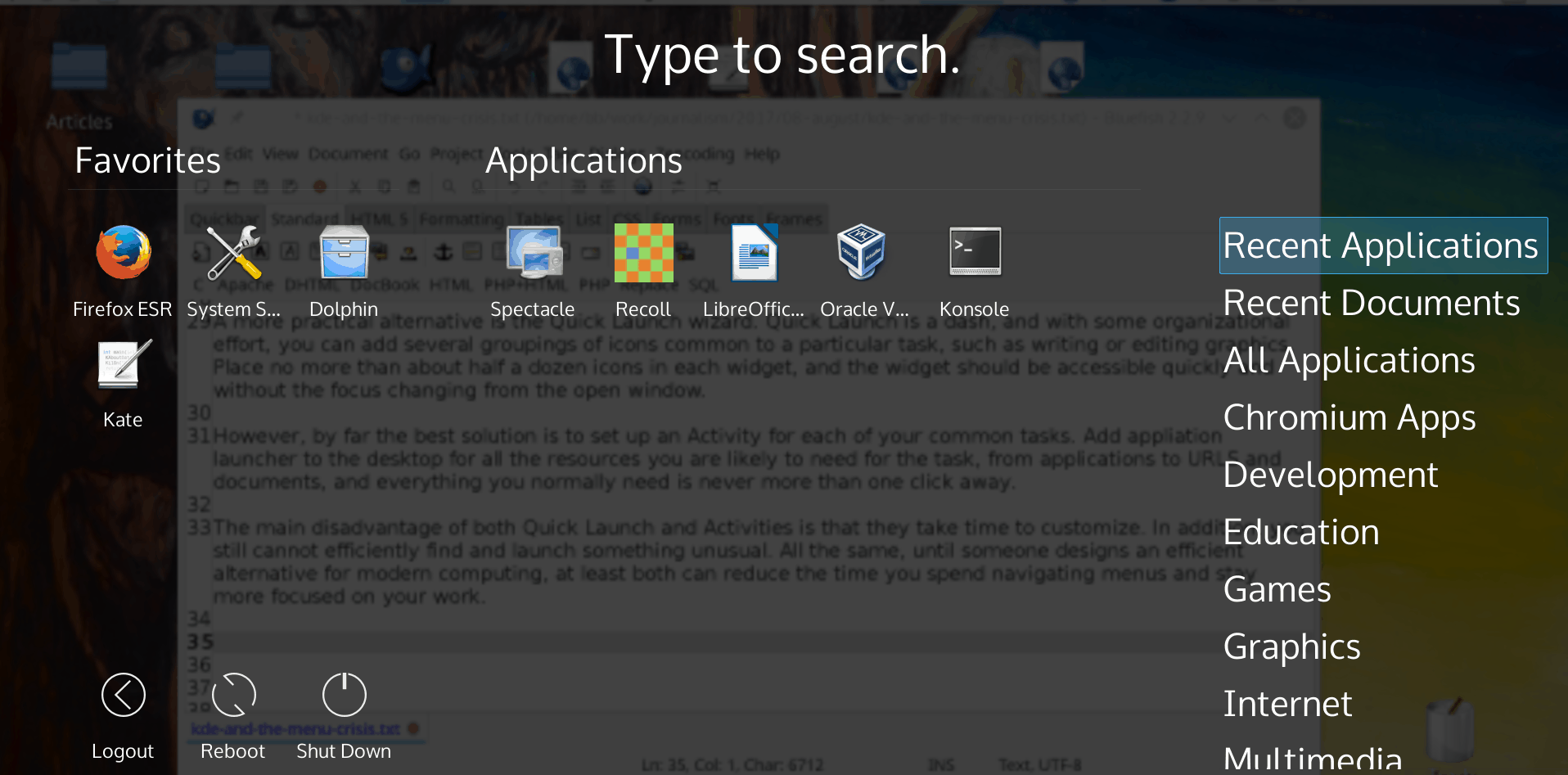KDE and the Menu Crisis


The menu crisis has been slow in coming — so slowly that few people are aware of it. Bit by bit, they have become accustomed to the inconvenience and distraction of the menu on the computer desktop, and learned to endure it. Yet the fact that KDE’s Plasma 5 desktop offers three choices of menu layouts, as well as a couple of alternatives to alleviate the difficulties shows just how little consensus exists about the most usable menu design.
The crisis exists because the menu was designed when thirty megabyte hard drives were the norm, yet we continue to use it. The purpose of a menu is to launch an application, preferably as quickly as possible, so a user’s work flow is uninterrupted. When personal computers were first introduced, menus easily filled this purpose. Few applications were available, and menus rarely had to be more than a couple of levels deep, so applications could easily be found.
However, as hard drives became larger, users had to scan more and more applications to find the one they wanted. The most extreme case was the Debian menu, which in places was six or seven levels deep. All sorts of partial solutions were tried –for example, not listing all the applications, a search field, and favorite list — but the problem has steadily increased with the size of drives. Probably the only reason why all the stopgap designs and solutions for menus are tolerated at all is that their uses on phones and tablets means that they have conditioned all of us to endure the awkwardness as the norm. Most users simply assume that nothing can be done, and continue using menus the same as always — ironically, often at the same time as moving away from desktop launchers, which can have the same problems, but can at least take provide another solution to help keep menus functioning.
-

- Login or register to post comments
 Printer-friendly version
Printer-friendly version- 2311 reads
 PDF version
PDF version
More in Tux Machines
- Highlights
- Front Page
- Latest Headlines
- Archive
- Recent comments
- All-Time Popular Stories
- Hot Topics
- New Members
digiKam 7.7.0 is released
After three months of active maintenance and another bug triage, the digiKam team is proud to present version 7.7.0 of its open source digital photo manager. See below the list of most important features coming with this release.
|
Dilution and Misuse of the "Linux" Brand
|
Samsung, Red Hat to Work on Linux Drivers for Future Tech
The metaverse is expected to uproot system design as we know it, and Samsung is one of many hardware vendors re-imagining data center infrastructure in preparation for a parallel 3D world.
Samsung is working on new memory technologies that provide faster bandwidth inside hardware for data to travel between CPUs, storage and other computing resources. The company also announced it was partnering with Red Hat to ensure these technologies have Linux compatibility.
|
today's howtos
|









.svg_.png)
 Content (where original) is available under CC-BY-SA, copyrighted by original author/s.
Content (where original) is available under CC-BY-SA, copyrighted by original author/s.

Recent comments
1 year 11 weeks ago
1 year 11 weeks ago
1 year 11 weeks ago
1 year 11 weeks ago
1 year 11 weeks ago
1 year 11 weeks ago
1 year 11 weeks ago
1 year 11 weeks ago
1 year 11 weeks ago
1 year 11 weeks ago